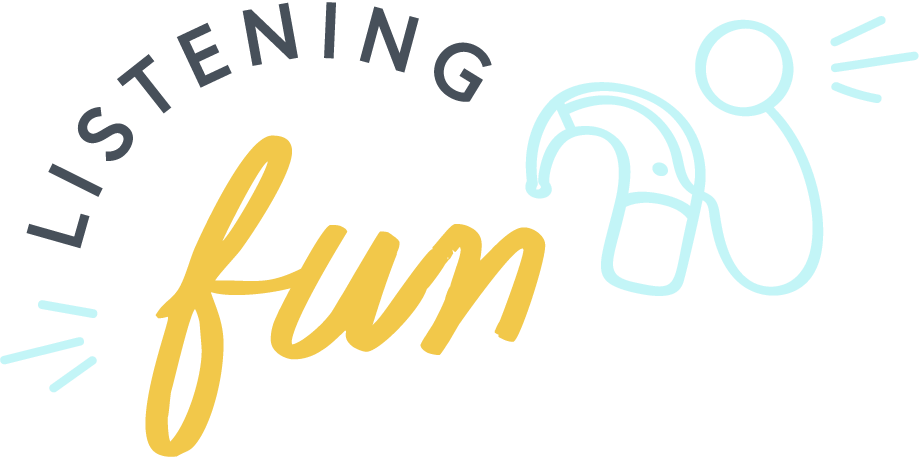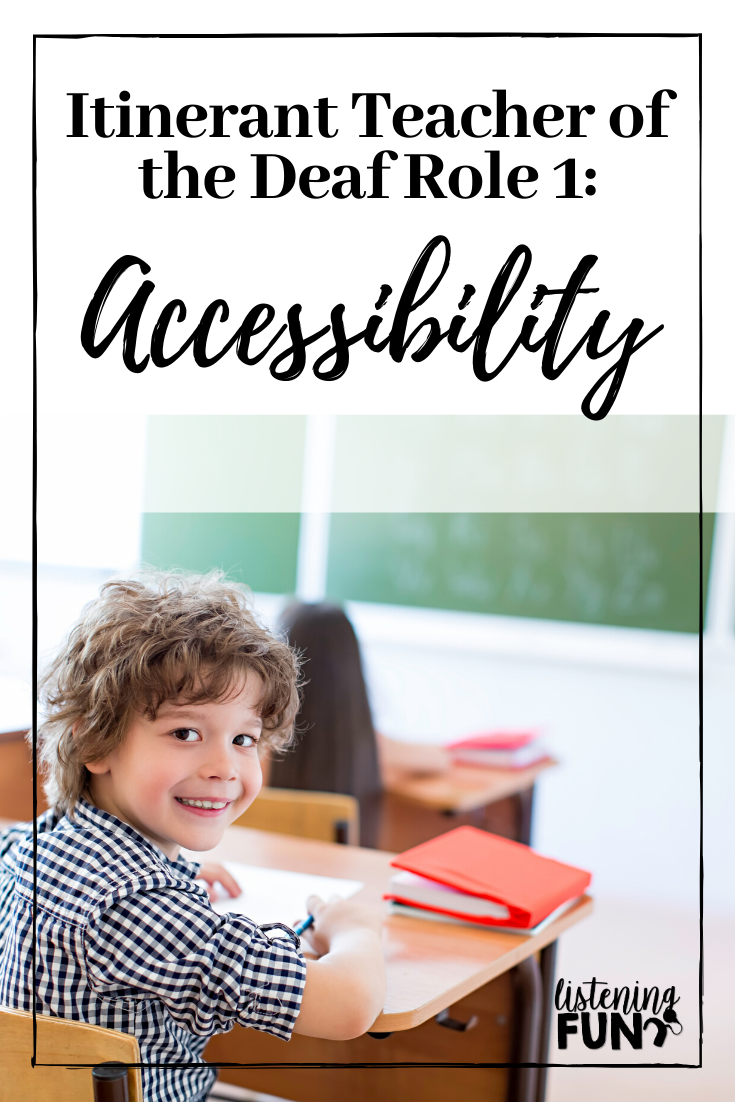Role of the Itinerant Teacher of the Deaf
Role of the Itinerant Teacher of the Deaf
What does an Itinerant Teacher of the Deaf and Hard of Hearing do all day? Unlike classroom teachers, itinerant teachers of the deaf travel between schools to provide services for children with hearing loss. Teachers of the deaf may work for one school district with many schools, on the county level, or for an agency. There may not be enough students in one school to warrant a full-time teacher, so she travels to various schools in a specific geographic area.
Who Needs an Itinerant Teacher of the Deaf?
Students with a hearing loss, who do not attend a specialized program for deaf/hard of hearing students may receive Itinerant Teacher of the Deaf services. These services are sometimes referred to as hearing services, hearing support, or TOD services. Placement and level of service vary based on a student’s individual needs and situation.
There are many students with hearing loss who attend their neighborhood schools and primarily use listening and spoken language as their main way to communicate. These students use hearing aids, cochlear implants, or other hearing technology to listen and speak. These students often benefit from Itinerant Teacher of the Deaf services within their neighborhood schools. This article will discuss the role of the Itinerant Teacher of the Deaf in the mainstream school setting.
What is the Role of the Itinerant Teacher of the Deaf?
The role of the teacher of the deaf can be broken down into three areas: accessibility, language and auditory development, and self-advocacy. Let’s take a look at each of these areas:
Accessibility
What does it mean to make a learning environment accessible to a student with hearing loss? It is the role of the teacher of the deaf to educate and consult with the classroom teachers to provide an accessible learning environment for the student with hearing loss. TODs can provide in-services at the beginning of the year. An in-service presentation provides classroom teachers with information on educational strategies for children with hearing loss. Some classroom teachers have never had a student with hearing aids or cochlear implants, and need information on the hearing equipment and on specific strategies they can use to help their students.
Some of these strategies include: preferential seating, repeating/rephrasing information, providing many exposures to vocabulary and information, using visual supports, checking for comprehension, minimizing background noise, and correctly utilizing the hearing equipment.
Additionally, a teacher of the deaf can monitor the classroom acoustics to ensure that learning is accessible for a deaf/hard of hearing student who primarily learns through listening. She might recommend physical changes such as carpeting, sound panels, or sound reducers on chairs. She can also offer educational suggestions such as closing the classroom door, seating the child away from noise sources, and reducing background noise as much as possible. Since typical schools are not designed for children with hearing loss, the TOD must evaluate the listening environment and make suggestions. Often, these suggestions have the benefit of reducing background noise which benefits all students in the classroom.
For a child who uses hearing aids or cochlear implants, their devices need to be working every single day in order for them to have access to the learning environment. It is the role of the teacher of the deaf to check the equipment (by listening to it using a listening stethoset and/or testing the ling 6 sounds). If there are any problems, the teacher of the deaf can troubleshoot the equipment and solve some problems. TODs are often the only professional in the building with any experience with hearing aids or cochlear implants, and therefore play an important role in maintaining the equipment. The teacher of the deaf often works with an educational audiologist to solve equipment issues.
*Small note: Only the educational audiologist (not the TOD) can recommend hearing assistance technology (FMs, DMs, soundfields, etc.). The TOD can help maintain and troubleshoot basic problems.
It is important to make sure that auditory information is accessible to the students. However, it is not the only thing we need to make accessible. It is also important to make sure the educational material is accessible; this is often achieved by previewing and reviewing vocabulary. Many deaf and hard of hearing students benefit from previewing and reviewing key vocabulary. Many students need multiple exposures to new words and may need to review the context. Many students struggle due to a lack of background knowledge, so they might need help making connections between concepts and fitting vocabulary into a larger context. Previewing vocabulary allows the student to have direct, repeated exposure to new vocabulary in a quiet setting. This makes the educational material more accessible because when they learn the information in the classroom, they have already heard the word a few times and have some context for the lesson.
As you can see, a big part of the role of an itinerant teacher of the deaf is making the environment accessible. This includes making auditory input accessible through classroom acoustics and hearing equipment, as well as making the educational content accessible by supporting the classroom teacher and previewing and reviewing vocabulary.
Auditory and Language Development
Teachers of the deaf and hard of hearing support students’ auditory skills and language development. Auditory skills include improving auditory memory, practicing auditory comprehension strategies, practicing listening in background noise, and more. Language development includes using longer and more complex sentences, increasing vocabulary, categorizing, comparing and contrasting, multiple meaning words, idioms, and analogies. The specific targets vary depending on the age and abilities of the student. The teacher of the deaf can determine which auditory and language skills need practice, and work on those skills.
Many children who receive TOD services also receive speech therapy. These services complement each other and can each benefit a student in different ways. Unlike speech, auditory training is often done without visual cues, with the teacher sitting next to the student so they need to rely on and practice their listening skills. TODs typically do not focus on articulation or specific sounds, however, the TOD and SLP may work together to determine if speech sound errors are resulting from a lack of access (Needs a new mapping? Hearing aids not strong enough? Change in hearing?)
An itinerant teacher of the deaf often pushes into classrooms, meaning she stays in the classroom with the student instead of pulling to a separate therapy room. This provides the teacher of the deaf with the opportunity to practice conversational and social skills with the student. She can model appropriate language, turn-taking, eye contact, etc. while in the classroom. This inclusion model can be helpful because it allows the TOD to see what functional communication skills the student needs to practice for real life.
Not every student with a hearing loss requires support in all these areas. It is the role of the teacher of the deaf to individualize the service so that she is best supporting the student.
Self-Advocacy
The last big job of the teacher of the deaf is to teach self-advocacy skills. Students with hearing loss will typically live with a hearing loss their whole lives and will be required to advocate for themselves in school, college, the workplace, and in life. For young students, self-advocacy skills may include cleaning and maintaining their hearing aids. It also includes understanding what factors impact their hearing (distance, background noise, technology, etc). As students grow, they are required to assume more independence for their equipment and learn how to troubleshoot issues.
Beyond equipment, self-advocacy includes identifying communication breakdowns and repair strategies. The reality is that everybody misses information sometimes, and the students need to be equipped with the skills to handle those communication breakdowns and repair them. They need to learn strategies for picking the best seat in class to hear. Additionally, older students learn about their accommodations and how to advocate for them.
Self-advocacy also includes discovering their identity as a person with hearing loss. This means connecting with similar students and identifying deaf/hard of hearing role models. They may need to practice explaining their hearing aids or cochlear implants to their peers and have a script ready. The TOD can help provide social and emotional support for students who are learning how to navigate school with a hearing loss.
Many students with hearing loss get by by “yes-ing” their way through school. They nod and say yes, but may be missing important academic and social information. It is the role of the Teacher of the Deaf to advocate for these students, while also teaching them to advocate for themselves.
Final Thoughts
The role of the itinerant teacher of the deaf varies greatly based on the student and the school. My favorite part of being an itinerant TOD is being able to provide exactly what a student needs, when they need it. When I am in their class, I am only thinking about their accessibility, their progress, and their goals. That student has my undivided attention, and I make sure they get the support they need to succeed. If a student is struggling with math, I can help. If they need a new battery, I have one. If they just need someone to talk to, I can be that person who understands. TODs are unique in this regard. The role of the itinerant teacher of the deaf is flexible and depends on the student, and that is what keeps it interesting!















